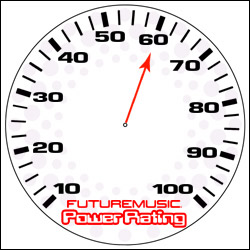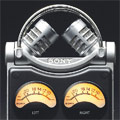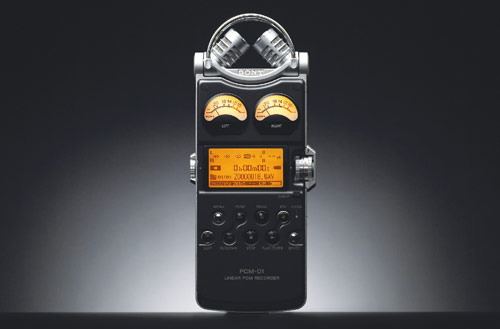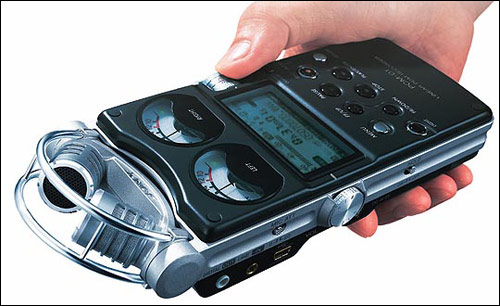|
|
|
|
|
|
|
|
|
|
|
|
|
||||||||||||||||||
|
|
|||||||||||||||||||
|
|
|
|
|
September 27, 2006 ../ TestDrive: Sony PCM-D1 Portable Linear PCM RecorderA True All-In-One Digital Portable Recorder Or A New Car...You Decide! When Sony first showcased the PCM-D1 at the AES trade show, I got a severe case of technolust. The sexy, beautifully designed, unit was a true digital recorder with built-in mics, a titanium case, and no internal moving parts, save for the tasty analog level meters. As I wiped the drool from my bottom lip, I couldn't help but think that this was the first Sony product in years that I wanted no matter what the cost. Unfortunately, after using the unit, I think I'll save the $2000 dollars it costs for owning one.It's not that I don't think the unit has its place in the world of portable recording, but for musicians and audiophiles looking for a field recorder, the price is just too high for the quality of recorded results, the poor battery life and the memory limitations. So who is the PCM-D1 for? Reporters who want that "bling" factor. Pull out the PCM-D1 at an interview, press conference or another arena where you want to impress and the unit will make you look like a star. There's a reason that 50 year old men get Ferrari's, and the same thing goes for the PCM-D1. Not that the PCM-D1 doesn't have some cool features, but then again, do you really need that huge spoiler when you're only driving 55 mph?
At the top of unit are two matched electret condenser cardioid mics angled towards each other in an X-Y stereo pattern that can swivel to your preferred recording angle. Two chrome bars protect the mics from unexpected bang-ups and come with a nice looking, but worthless windscreen. The mics provide excellent stereo imaging, not only left and right, but near and far. Described as "3D imaging" and "surround-sound-like" by our testers, Sony's diligence on mic positioning paid off handsomely for solid stereo recordings. Sony went to great lengths to control noise on the PCM-D1 and several tricks of the trade are utilized to give the unit an extremely low noise floor. The mics are connected to a set of quality Analog Devices AD797 digital pre-amps. Power is delivered to the analog and digital circuit boards separately, limiting interference and preventing digital hash from leaking into the analog realm.
Every time the PCM-D1 creates a recording, the DSP Limiter simultaneously records a second mirror track at -20 db. This duplicate track is stored in a buffer as the recorder evaluates the levels in real time. Should a transient peak overload occur, the backup audio is instantly normalized and inserted in place of the clipped signal. This is a brilliant concept, but it just isn't transparent enough for disconcerting ears. Again, it's great for reporters, not for audiophiles. Operating the unit couldn't be easier. The controls are straightforward, ergonomic and well-defined. The LCD screen was a pleasure to read in low-light environments, but not in bright sunlight, and the menu system was simple and well-behaved. The analog VU meters may be a little redundant since the LCD screen showcases digital levels, but they give the unit a cool vibe, and a retro feel. The unit is powered by AA batteries and comes with four 2500 NiMh rechargeables and a pocket charger. Unfortunately, the batteries only last about three hours under normal operating conditions, but they are standard AA's, so carrying an eight-pack of high-output alkalines will get you through most conditions until you can get recharged. Kudos to Sony for using a standard format and not forcing the consumer to purchase several proprietary rechargeable batteries for backup.
One of the best things about the PCM-D1 is the extremely simple process of off-loading your recordings to your computer. Simply attach the USB 2.0 connection to your Mac or PC, and the PCM-D1 appears as an external hard drive. Drag the WAV files to our computer and you're done. It's that easy. The Sony PCM-D1 has a lot going for it in terms of design, ease-of-use, low-noise and innovative DSP, which makes it an easy choice for any type of field reporting. However, if you're looking for a portable recorder that will meet demanding audiophile requirements, you can do a lot better for your $2000. The Sony PCM-D1 is available for about $1900 from Amazon and other retailers worldwide. For more information check out Sony's PCM-D1 website. The Future: The Sony PCM-D1 is a great start for a comprehensive portable digital recorder line-up. We'd love to see a much more affordable model that addresses the needs of musicians and audiophiles without the "bling."
Copyright © 2006 Futuremusic® All Rights Reserved. |
|
|
 The Sony PCM-D1 is a sleek portable digital recorder with many positive attributes. Unfortunately, the negatives: price, quality of results, memory restrictions and limited battery life, are enough for us to not be able to wholeheartedly endorse the product to the masses. However, if you need a super sexy device for capturing the spoken word, and don't care about shelling out the big bucks, then the PCM-D1 is your new sweetheart.
News Archives
|
|
|
|
|
|
|
|
|
|
|
|
|













